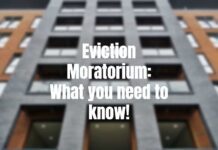Ok – that might be a bit of an exaggeration, but . . . they did point out several items of interest and made me realize just how much has changed in the zoning code . . . or could. I have to admit that even I find the thought of reading the zoning code a real snooze and I haven’t done it. I can’t imagine doing it. I’ve heard that essentially the code is just being written into a different form and not alot has changed except trying to make more things permitted uses, but I think the Urban Design Commission brought up issues that might be of interest to many. They only reviewed the portion of the code that pertains to them, and didn’t finish, but here’s a start of their list of questions, concerns and tidbits of information I learned at the meeting.
– The ordinance was introduced at the last council meeting and it will be officially referred to the Urban Design Commission.
– They sent subsections related to UDC and a link to the entire ordinance which is 240 pages long. Existing ordinance is 320 pages with the index and we don’t have downtown districts yet and the index. But they don’t care how many pages it is as long as it works. Most people only look at a few pages as a reference. They just want to make it right. 1960’s code was 215 pages.
PLANNED DEVELOPMENT DISTRICTS – This section replaces the PUD process.
– Wagner asks who makes the decisions about if the project is a “similar pattern of development”. Initially the decision will be made by staff and they will go to Plan or Council.
– Wagner asks the UDC will see fewer developments? They say that’s the theory, but we’ll see. Not sure if the work will be reduced because of other provisions in the code.
– They asks what the concept presentation is (page 91)? Murphy says that downtown design zones are the only ones currently required to do it, but its a good idea and should apply to others, especially if there will be less of them it won’t be a big burden. This will be before a formal submittal or a plan has been circulated to all the agencies. It’s like the pre-design conference with staff where they can provide comments about what is submitted.
– Wagner notes that 5(a)(2) that commission can ask for additional info but he asks if that is just to the applicant or if it includes staff. Staff agree that this is the time to bring up issues and ask for additional information staff, applicants and consultants. They ask for this to be specifically stated in the ordinance or remove a portion of language that makes it specific to the applicant.
HISTORIC DISTRICTS
– Rummel asks how historic districts fit in to this. That is in another part of the ordinance but they will be overlay districts like an Urban Design District. They may or may not be in a Planned Development District and they might want to require a concept presentation for overlay districts as well. Murphy says he expects that applicants would provide that info, but it doesn’t always happen.
INITIAL AND FINAL APPROVAL
– They ask about the initial and final approval process and if that stays the same. Staff say that was never in the code, it is practice or procedure of the Urban Design Commission. They ask for clarification if the new language required final approval before going to Plan Commission. They suggest that they could recommend something with conditions that it returns to UDC. Staff suggests that might go in c(1) and e(1) by saying something to the affect that “some design comments ma;y be subject of further design review.”
GENERAL PROCESS ISSUES
– Staff explains there are both design standards and requirements that say Plan Commission may waive the requirement if they find it difficult for the applicant to comply, but they need to get Urban Design review. This is why their workload might increase, but they hope that it is the exception and applicants don’t ask for many waivers.
– They discuss if they need to have additional criteria about what would require a concept presentation such a a larger projects. Staff say that they’d have to come up with that criteria to determine which additional projects would require a concept presentation. They debate if that belongs in the code or the procedure manual. Staff say 70 – 80% of the apps they see there is a pre-app. They decide staff should strongly encourage it with applicants.
– They ask how the transition from the old code to the new code will work. Staff say there will be an effective date and they will apply the old code to applications before that date and the new code to applications on or after that date. If their approvals expire, they need to go through the process with the new code.
CAMPUS AND HOSPITALS/LARGE INSTITUTIONS
– Wagner asks about the Campus Institutional District. Staff explain that right now they only have to get approval for zoning changes. Under this, if they have an approved master plan and it is in compliance, we won’t see their projects. He notes more decisions will be made at the plan commission level and not go to the whole council. They discuss the legal reasons the UW has different review requirements because they are the state. Right now, most of the institutional uses require a conditional use but don’t comply with the bulk standards so end up doing a PUD. They say that they would have to go through a master planning process and get that approval and once they have that, they can develop as long as it is consistent. In the absence of the master plan they will still need to get reviewed. They note this also applies to the large hospitals.
– They ask if Transportation Demand Management (TDM)plans would be put into the Master Plans. They note that this is not specifically in there, but the language allows them to look beyond traditional TDMs.
PARKING LOT LANDSCAPING
– They ask for stronger but realistic requirements for plants that struggle to grow in a parking lot. They want to know what it will look like in 15 years. They suggest that they have special standards for trees that likely won’t last more than 15 years in a parking lot. There are only about 30 tree species they use in parking lots and they could put together some guidelines about them.
– They discuss that trees need larger space to grow in parking lots and they seem to think they are doing that for newer parking lots.
– They think they the larger the parking lot, the larger the need for diversity of tree species.
– There is discussion about parking lot lighting not interfering with trees and finding ways to have smaller islands for lights that are not in the tree islands.
– They note that the reason the trees don’t do well is that they have small planing pods and they need 4 feet of dirt not gravel.
– They discuss not prescribing the number of bushes to plant because they grow to different widths, they should say continuous plantings or recommend a percentage of coverage instead.
– Grasses will count as plantings in the new code, but not perennials.
– They discuss the need to have a good review of pedestrian movements in parking lots. They suggest having a pedestrian walkway every 50 – 75 feet and they discuss many complications with that concept and suggest they do a pedestrian circulation plan. They note that there might need to be more work in chapter 10.
– They discuss the need to break up parking lots and that there should be a break every 12 spaces. They discuss various ways to give trees more room to grow properly.
– They discuss the lack of enforcement of zoning in parking lots and note that the staff only reviews it if there is a complaint.
– They discuss having the requirement to place trees be by the next growing period instead of allowing them a whole year.
– They discuss how current violators are dealt with. They explain most of it is up to the court, but they try to work it out ahead of time. They typically give thema high/low choice and if they fix the problem by a certain date, they get the lower fine. If not acceptable, they go to prosecution.
MINIMUM AND MAXIMUM PARKING
– They have minimum and maximum requirements for bikes and cars but not mopeds.
– They’d like to see more waivers for parking along transit corridors and change it from 25% to 50% reductions. They should also add reductions for TDM plans and shared parking or shared cars.
– They note that they don’t want to allow them to reduce bike parking, only car parking.
– Staff say there is a memo and more work to be done on the bike issues.
– They throw out the idea for downtown areas to pay a fee in lieu of bike parking to help pay for city bike racks.
HOTEL AND RESIDENTIAL PARKING REQUIREMENTS
– They discuss changing the maximum parking requirement from 2 spaces per room to 1.5 spaces per room but allowing waivers from the plan commission if they need more for convention centers.
– They question why someone would need 4 parking spaces outside of the garage for a single family home.
– They ask why there is only one standard of 2.5 maximum spaces for multi-family buildings (3 units and up) and why they don’t have different requirements for larger buildings. They also note that they don’t treat a building of efficiencies different than a building with 4 bedrooms.
– They discuss when to count storage lockers as bike parking. They note that they can’t say that is where the bikes have to be parked.
– They discuss what counts as an outdoor parking space. They discuss wood chips, grass, impervious surfaces, gravel, pavers, landscaping stone and don’t come up with any real answers.
BUS STOPS
– Are covered in conditional use standards in big parking lots. Bus stops in the right of way are not in the zoning code.
BUILDING STANDARDS
– There are some who don’t like the requirement to have a certain rhythm to the architecture like in the big box ordinance.
– There is some concern about restrictions on types of materials.
– And with that, the two hours were up and they adjourn with another meeting in another month to discuss further issues.




